Search Images
Browse Content (p. 1574)
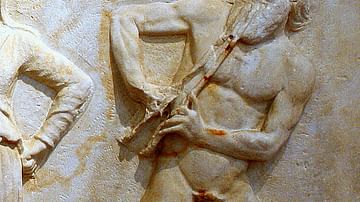
Image
Marsyas, detail from NAM, Athens, 215.
Detail of Marsyas from NAM, Athens, 215. The bearded satyr can be seen in a state of movement as he plays his auloi, the spread of his fingers is preserved by the left hand, and presumably corresponds to the finger-holes of the instrument

Image
Apollo, detail from NAM, Athens, 215.
Detail of Apollo from NAM, Athens, 215. He is seated on a tree stump, wearing chlamys and chiton, and sandals. In his left hand he rests his seven string lyre (the stings would have been painted; the number of tuning pegs gives their frequency...
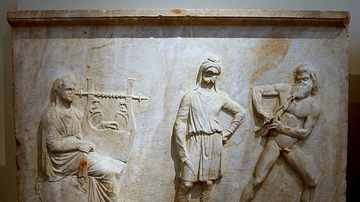
Image
Apollo and Marsyas
National Archaeological Museum, Athens, 215. 330-20 BCE. This relief slab is one of four that made up the revetment of a pedestal (only three survive), and was found at Mantineia, Arcadia. The pedestal either acted as a base for a statue...
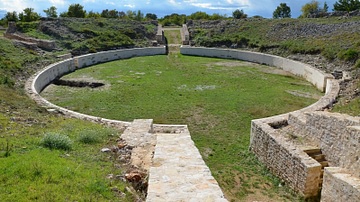
Image
Roman military amphitheatre
The military amphitheatre of Burnum Legionary Camp in Dalmatia (modern-day Croatia). It was completed in 76-77 CE under Vespasian. The legionary camp was erected at the turn of the new era at a strategically important position from which...
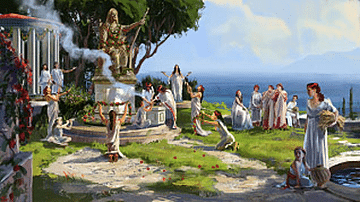
Image
Greek Religious Festival
Artist's impression of how a Greek religious festival may have looked like.
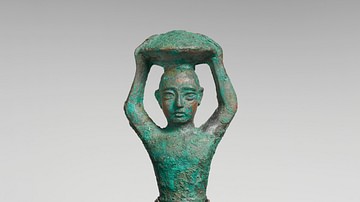
Image
Foundation Figure of King Shulgi of Ur
Foundation figure of King Shulgi of Ur carrying a basket, copper, c. 2094–2047 BCE. Foundation figures were buried in the foundations of a temple and show the king carrying building materials for the temple. Building and restoring temples...
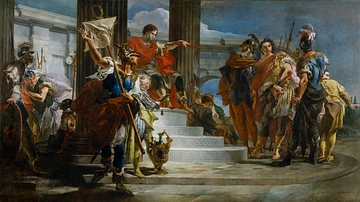
Image
Scipio Africanus Freeing Massiva
As described by the Roman historian Livy (1st century BC), the youthful Massiva was the nephew of a prince of Numidia in present-day Algeria who had supported Scipio Africanus (a Roman general so known because of his conquests in North Africa...
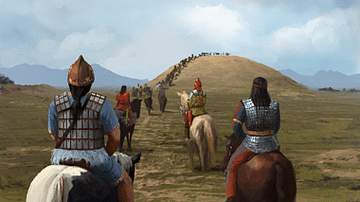
Image
Scythian Funeral Procession
Artist's impression of how a Scythian funeral process may have looked like. A typical Scythian burial mound (or kurgan) is visible in the background.
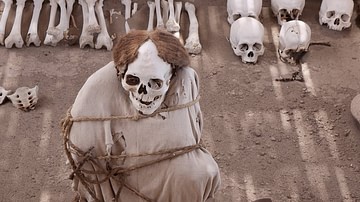
Image
Ancient Andean Mummy Bundle
A Nazca mummy bundle from Chauchilla, Peru. Then Nazca civilization flourished between 200 BCE and 600 CE. Mummification was a common practice in many ancient Andean cultures.
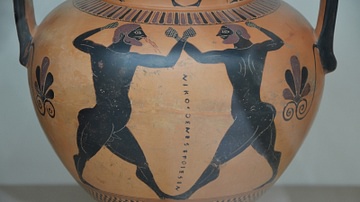
Image
Amphora showing a boxing contest
Black-figured amphora showing a boxing contest, made in Athens about 550-500 BCE, signed by the potter Nikosthenes, from Agrigento (Sicily). The boxers wearing himantes (leather thongs bound on the fist) are about to exchange blows. The boxer...